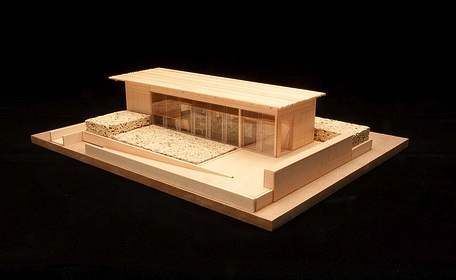
Image Credit: U.S. Department of Energy Solar Decathlon
Image Credit: U.S. Department of Energy Solar Decathlon Called Solar Homestead, this project is being developed by Appalachian State University. The team says that its outbuildings will function as standalone solar collector sites that provide heat and power to the dwelling. Like Appalachian State’s project, the home being developed by Middlebury College also is called Solar Homestead, although its exterior design, which includes a gable roof that sheds snow in winter and provides a slope for south-facing photovoltaic panels, resembles that of a New England farmhouse. South California Institute of Architecture and California Institute of Technology are collaborating on this minimal-footprint project, called CH:IP house. Called the Y-BOX, this house has been designed by Team China, represented by Tongji University, to maximize its solar-receptive surface and clearly define functionally distinct sections of the living space. Team Belgium, represented by Ghent University, is developing E-Cube, an affordable, prefab, do-it-yourself building kit for a solar-powered house. Team Canada, represented by University of Calgary, will build Nitohkskapi, designed as a sustainable-housing option for Blackfoot Native American reservations. Purdue University is developing a project called flex/home, which the Purdue team says is being designed with air and heat recovery systems that will reuse energy, and a hanging garden integrated with the HVAC system to help filter carbon dioxide out of the air. Team New York, represented by City College of New York, is developing Solar Roofpod, which is designed to be added to urban building rooftops. The team says the structure’s building-block assembly can be transported to a building's roof via staircase or elevator. Team New Jersey – represented by Rutgers University and the New Jersey Institute of Technology – is developing the eNJoy! New Jersey Solar House. It features an exterior of insulated concrete sandwich panel, which, the team says, will collect heat from sunlight during the day and distribute that heat throughout the house at night.
Those of us who might visit Washington, D.C., in 18 months so we can tour the 2011 Solar Decathlon contest entries on the National Mall have the luxury of planning the trip at our leisure. But for the 20 collegiate teams recently awarded spots in the 2011 contest by the Department of Energy, feverish preparation for the competition began long ago.
As we noted in July of last year, in a post about the University of Tennessee’s ambitions to land a place in the competition, developing a project proposal for consideration by the DOE’s Decathlon selection committee requires technical ingenuity, construction expertise, budget planning, and months of advance work. The DOE will announce its request for proposals for the 2013 competition, for example, in the summer of next year. (The Solar Decathlon is a biennial event in the U.S., and there is a similar event scheduled for June this year and in 2012 in Europe).
Gearing up for the big trip
In the end, though, the Solar Decathlon is all about creating houses that are affordable, energy efficient, and attractive, as the DOE puts it – but also with no more than 800 sq. ft. of interior space. Each entry is judged in 10 contest categories: architecture, market viability, engineering, lighting design, communications, comfort zone (temperature and humidity), hot water, appliances, home entertainment, and net metering. Suffice to say, all teams try to deploy solar power not only generously but strategically.
The DOE gives $100,000 to each contestant to help with development costs, although the teams are responsible for raising whatever remaining funds they’ll need to complete their projects, transport team members and Decathlon houses to Washington and back, and construct and operate their houses on the National Mall.
Happily for the team of faculty, graduate students, and undergraduates assembled by the University of Tennessee’s College of Architecture and Design, its Solar Decathlon house, called Living Light, was selected to be among those built on the Mall in 2011. This will be UT’s first Decathlon.
The contenders
Here are the other 19 contestants. We’ve included a few words about each project for the first nine listings below; conceptual models for the remaining listings are featured in the photo gallery, where briefs about each entry are included in the captions accompanying the photos. (You can view images of all the models on the Solar Decathlon website.)
– Florida International University. This team’s entry, called PerFORM[D]ance House, features adjustable louvers that can be used to alter the canopy for sun, shade, and even hurricane conditions found in tropical climates. The team says the house is designed to perform “in real time by sensing and responding to the generation and acquisition of energy.”
– University of Hawaii. Monocoque House, another design for tropical conditions, is aimed at middle-income buyers. It features a water-cooled PV system and phase-change material for thermal storage, radiant floor heating, and radiant ceiling cooling. The shell-like exterior, made of lightweight bio-based, fiber-reinforced polymer, is resistant to corrosion, rot, and insects. The house also will float if there’s a flood.
– University of Illinois at Urbana-Champaign. Called Community Conexion, this house is designed as a disaster-relief shelter deployed in three stages, with the last stage presented as a fully equipped home.
– University of Maryland. This house, called Watershed, features two rectangular units capped by a butterfly roof. It also includes an edible green wall and garden.
– The New School and Stevens Institute of Technology. Called Better Together, this house is designed to provide solar-powered Habitat for Humanity housing for residents of the low-income Deanwood neighborhood of Ward 7 in Washington, D.C.
It consists of two modules that unite to form a functioning solar duplex, with each module sustainable on its own but designed to achieve peak efficiency when joined with its counterpart. Hybrid photovoltaic thermal cells generate most of the power.
– Victoria University of Wellington, New Zealand. This 700 sq. ft. house, First Light, is billed as an affordable reinterpretation of the historic New Zealand holiday home, the “Kiwi bach.” In addition to a rooftop PV system, it produces hot water with a roof-mounted evacuated-tube system.
– Ohio State University. On the Solar Decathlon website, this project, called INTROhouse, is described as “an inward-focused design that features a rainwater collection pond at its core as well as a courtyard with wild garden to provide occupants with views of nature.” A steel grate on the exterior serves as a rain screen and shields the house from summer heat, and a PV array mounted horizontally on the roof provides electricity while also shading the roof and courtyard. A central combined air-to-air/air-to-water heat pump provides heating and cooling.
– Florida State University, The University of Central Florida, The University of Florida, and The University of South Florida (Team Florida). Team Florida will present Flex House, a modular home intended for medium-income homebuyers living in a hot, humid, sunny climate. The structure features sliding glass panels on the north and south walls that open to a central courtyard for ventilation during mild months, high ceilings with a solar chimney, moveable interior partitions to maximize HVAC efficiency, and an interior desiccant waterfall that absorbs moisture from the air to control humidity.
– Massachusetts College of Art and Design and the University of Massachusetts at Lowell (Team Massachusetts). Team Massachusetts says its project, 4-D Home, “is designed to accommodate the needs of a family of three throughout their lives.” It is actually three small houses clustered around a south-facing side yard, or “dooryard.” Removable glass wall panels surround the dooryard space, which serves as a sunroom in winter and an open porch in summer.
– Tidewater Virginia: Old Dominion University and Hampton University. This team’s project, Unit 6 Unplugged, is an affordable home designed for construction in confined urban settings. The structure to be presented at the Solar Decathlon, the team says, “represents part of a six-unit, multifamily infill building for a central city site. One full unit and a portion of the building core will be on exhibit” in Washington.
– Appalachian State University, which will present a project called The Solar Homestead.
– Middlebury College. Solar Homestead, a reinvention of the New England farmhouse.
– Purdue University, which will present a project called flex/home.
– The Southern California Institute of Architecture and California Institute of Technology, whose project is called CH:IP.
– Ghent University (Team Belgium), whose project is called E-Cube
– University of Calgary (Team Canada), which will present a house called Nitohkskapi.
– Tongji University (Team China), with a house it calls Y-BOX.
– Rutgers University and New Jersey Institute of Technology (Team New Jersey), which will present its eNJoy! New Jersey Solar House.
– The City College of New York (Team New York), which will present a project called The Solar Roofpod.
Weekly Newsletter
Get building science and energy efficiency advice, plus special offers, in your inbox.





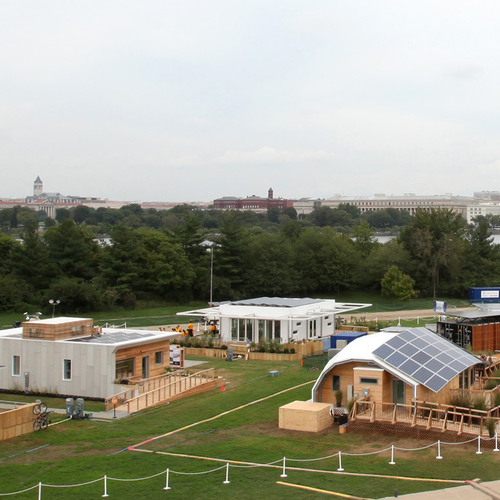
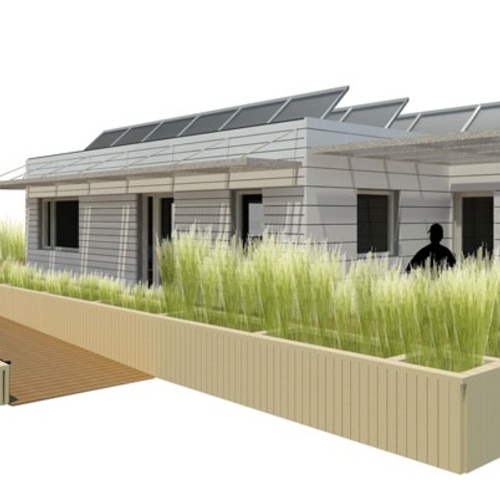
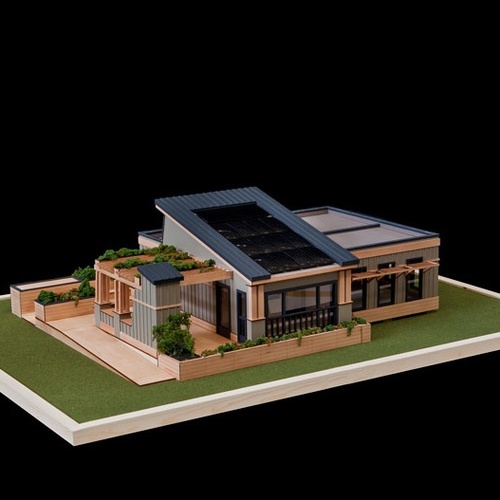
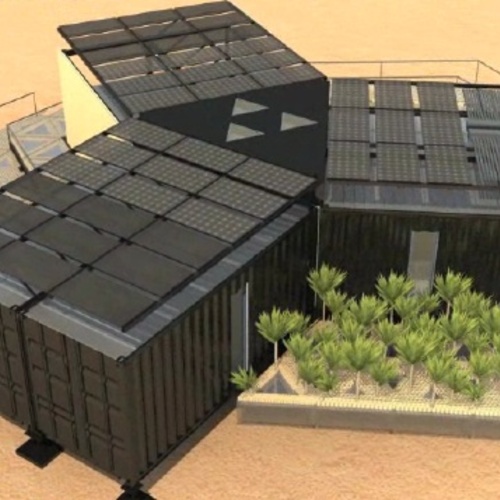






0 Comments
Log in or create an account to post a comment.
Sign up Log in